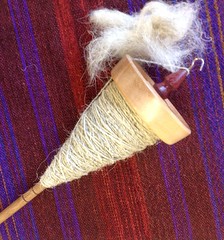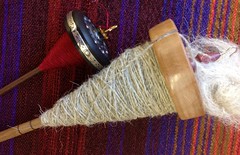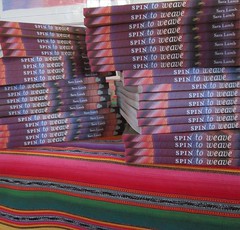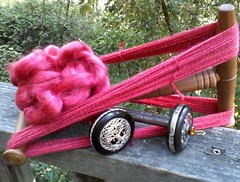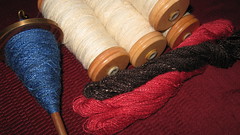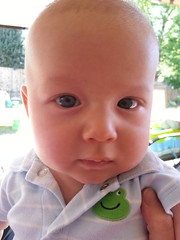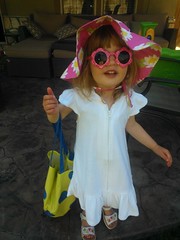I Am a Handweaver
Handweaver.
What does that mean? Of course, it means I weave, by hand: I weave cloth.
There are many things to weave: rugs, tapestries, mats of all kinds, for tables chairs and floors. Towels, bath and kitchen, hand and body. Upholstery, for chairs and as cushions. Baskets.
But I weave cloth for clothing.
This week, at Olds, it was driven home to me once again how little we examine the cloth we use and wear, that is all around us, everyday.
Most commercial cloth for clothing is simple in structure: plain weave or twills of some kind. Most commercial cloth is all of a piece: all over patterning, yards and yards of the same weave structure, the same color, cut and sewn into garments or pillows or chair covers, or divided into mats or napkins....
But I am a handweaver. I can do things differently. And I do. When I plan a fabric for a garment, I know what garment I will be making. I can make the fabric suit the garment perfectly (pun!) and one of the ways I do so is by using color placement:

The fabric is not the same selvedge to selvedge. In fact, it can look decidedly off balance as woven:
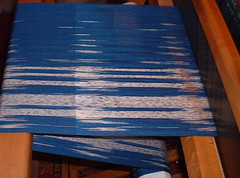
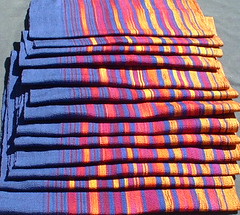
But the color is planned to appear in a specific way on the finished garment:
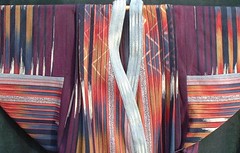
I am accustomed to weaving fabric on the loom that does not look symmetrical. It will, though, when sewn into the garment. The garment will not look like a purchased garment, if only for the fact that the plan, the colors, the weaving, is custom. Custom to that shape, that particular style, that particular piece of clothing. The color placement can be bold or subtle, clearly, I lean toward the bold end of that spectrum!
It is one of the things we can do, as handweavers. Bespoke cloth, so to speak: cloth woven specifically for a particular end use.
I love this. I hope to continue exploring color and clothing this way:
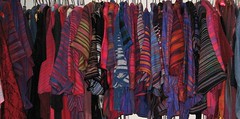
But I may have to find a bigger closet.
What does that mean? Of course, it means I weave, by hand: I weave cloth.
There are many things to weave: rugs, tapestries, mats of all kinds, for tables chairs and floors. Towels, bath and kitchen, hand and body. Upholstery, for chairs and as cushions. Baskets.
But I weave cloth for clothing.
This week, at Olds, it was driven home to me once again how little we examine the cloth we use and wear, that is all around us, everyday.
Most commercial cloth for clothing is simple in structure: plain weave or twills of some kind. Most commercial cloth is all of a piece: all over patterning, yards and yards of the same weave structure, the same color, cut and sewn into garments or pillows or chair covers, or divided into mats or napkins....
But I am a handweaver. I can do things differently. And I do. When I plan a fabric for a garment, I know what garment I will be making. I can make the fabric suit the garment perfectly (pun!) and one of the ways I do so is by using color placement:

The fabric is not the same selvedge to selvedge. In fact, it can look decidedly off balance as woven:


But the color is planned to appear in a specific way on the finished garment:

I am accustomed to weaving fabric on the loom that does not look symmetrical. It will, though, when sewn into the garment. The garment will not look like a purchased garment, if only for the fact that the plan, the colors, the weaving, is custom. Custom to that shape, that particular style, that particular piece of clothing. The color placement can be bold or subtle, clearly, I lean toward the bold end of that spectrum!
It is one of the things we can do, as handweavers. Bespoke cloth, so to speak: cloth woven specifically for a particular end use.
I love this. I hope to continue exploring color and clothing this way:

But I may have to find a bigger closet.
